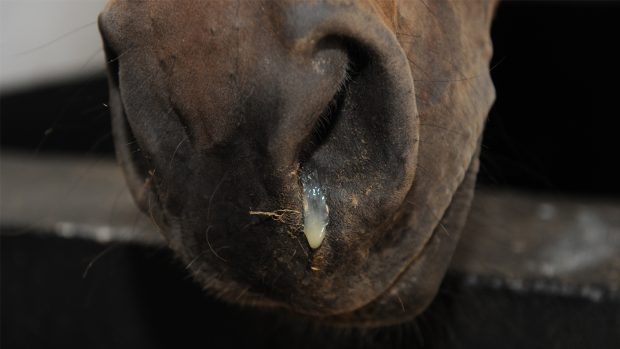Rick Farr of Farr & Pursey Equine Vets shares his expert advice on splints, how to treat them and what you can expect
Q: “My daughter’s pony came up lame today — she is a six-year-old competition pony. On inspection there’s a small, warm splint that is sore to touch but apart from that she has totally cold legs with no other swellings. She has individual bark turnout at the minute and doesn’t mess about so I’m just guessing it’s come up from jumping. We’ve ice tighted her and given her some bute this evening. What else apart from rest can we do to help it settle and what is the prognosis for splints in horses?”
A: I would have given similar advice to anyone that called me with regards to a newly formed splint. Rest and anti-inflammatories are the mainstay of treatment for splints, however there are other things you can do. But first I feel it is important to realise what you are treating in order to appreciate the sometimes slow improvement of these cases.
In essence, splints are additional bony growths called exostoses, which are as a result of stress/trauma or instability between bones. Commonly most people see splints form between the cannon bone and splint bones, which is usually as a direct result of the ligament between them tearing. However, splints can occur directly on the cannon bone without involvement of the splint bones themselves. Either way, the main concern is whether the exostoses impinge on any surrounding soft tissue structures. If so, longer term issues arises with regards to lameness.
Continued below…
Related articles:
- H&H forum: find out what H&H readers suggested
- Understanding splints in horses
- Read more veterinary advice
In the short term, as splints form they are often hot and painful to the touch and many horses resent interference with them; this can also present itself as lameness. Thankfully, this is short- lived and, with a subtle bit of management, most horses return to soundness.
It would be my advice with all acute splint formations that the horse is given adequate rest and the longer the better. The amount of rest required depends on the extent of the splint, but I would start with at least 2-3 weeks of no exercise and restricted paddock turnout. The concept is to provide supportive therapy to reduce the inflammation within the area, in conjunction with minimising concussion. The addition of anti-inflammatory medication is always advised, coupled with cold hosing, bandaging and icing of the limb. Some of the larger exostoses may benefit from local infiltration of steroids under the skin, however specific case selection would be required by your vet.
At our practice, in conjunction with the supportive therapy above, we use a topical product which includes a corticosteroid, Dimethyl Sulphoxide (DMSO) and Lidocaine (local anaesthetic). This product is available on the continent but does not have a specific licence in the UK. Under certain circumstances your vet may obtain this product in order to help in the acute phase of the splint’s development.
It is important to realise you may be dealing with various anatomical structures and the splint may take several weeks to settle. Until fully formed, it is unlikely you will know the full extent of its implications. Call your vet in order to help you appreciate whether it is likely to cause you any problems in the future.
Therefore, to summarise, avoid all concussion, be bold with the cold compression, give as much time off as you can and get it treated early.




